Patagonia Refugio Backpack Review
Lightweight materials and outdoorsy features make the Patagonia Refugio Backpack ready for adventures. It also works for EDC if you don’t have much to carry.
Our Verdict
Save time. Get access to brief summaries of our reviews so you can browse and make decisions more efficiently.
Pros
- Lightweight and comfortable to carry long distances
- Water bottle pockets are wide and stretchy
- Vertical quick grab pocket is easy to access without taking the pack fully off
Cons
- Compression straps block main compartments
- Pockets are not liter independent and take up space from each other when packed
- Women’s version is only available in 26L
Technical Details
-
Capacity
28l
Women's version is 26L
-
Weight (lb)
1.32 lb (0.6 kg)
-
Denier
630D
for most colors | 450D for Iggy Blue
-
Dimensions
17 in x 11.5 in x 8 in (43.2 x 29.2 x 20.3 cm)
-
Notable Materials
Recycled Polyester, Nylon, DWR Coating, Polyurethane (PU)
-
Manufacturing Country
Vietnam
-
Laptop Compartment Size
15"
-
Warranty Information
Buying Options



Full Review
Patagonia is one of those easily accessible and recognizable brands that consistently puts out solid gear. Add the Patagonia Refugio Backpack to the list of dependable packs for travelers itching to get outside and into the wild. It’s lightweight with features like daisy chains for exploring the great outdoors. With that said, it’s also versatile and low profile enough for everyday carry. So if you’re not looking for a hiking or climbing backpack, but still want something relatively small for your work commute, this could be it!
The Refugio Backpack is available in both a women’s version and a men’s version. This isn’t some ridiculous marketing ploy where they take a product, slap on something pink, and say it’s for women (thankfully). The difference is in the harness system and profile of the pack which are both designed to be more tailored to a woman’s body. They also differ in size. The men’s version is 28L and the women’s is 26L.
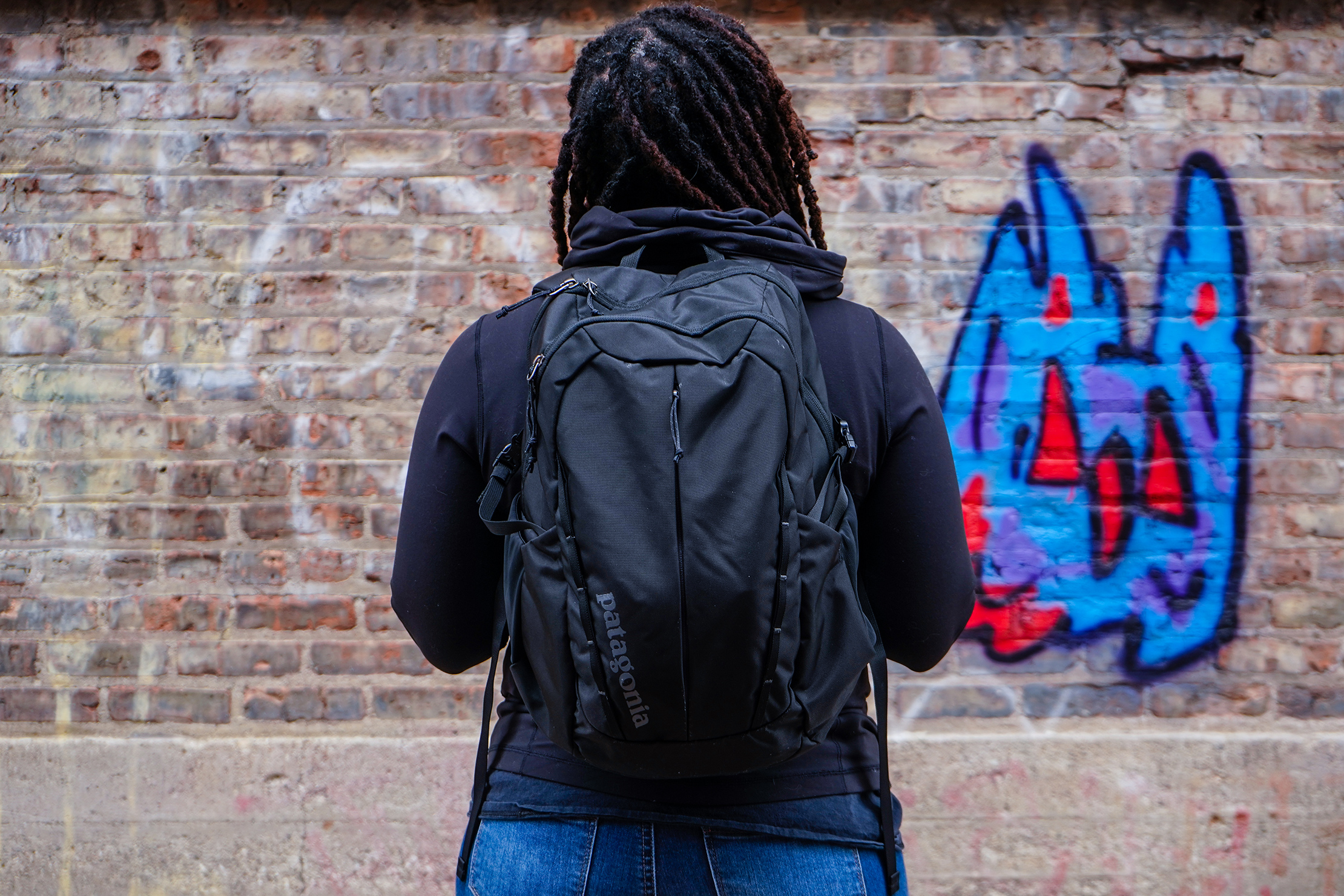
While this review is focused on the women’s version because it’s what we tested, the features on both packs are the same. We will say that we wish there was a way to make a backpack that is suitable for smaller frames without sacrificing capacity, as an extra two liters would have been nice. Maybe, someday this fantasy pack will exist in the world. For now, let’s delve into the Refugio’s materials.
Materials & Aesthetic
Patagonia takes recycling seriously and is always incorporating some level of sustainable materials throughout its products. The Refugio Backpack is made out of recycled nylon and polyester. The outer fabric is a 630D nylon plain weave, 50% of which is recycled while the other half is high tenacity nylon. It has a PU coating and water repellent finish to protect against light rain and moisture. The liner is a grey 200D polyester that’s—you guessed it—100% recycled. The materials vary slightly depending on the colorway, but most of them use the fabric mentioned above.
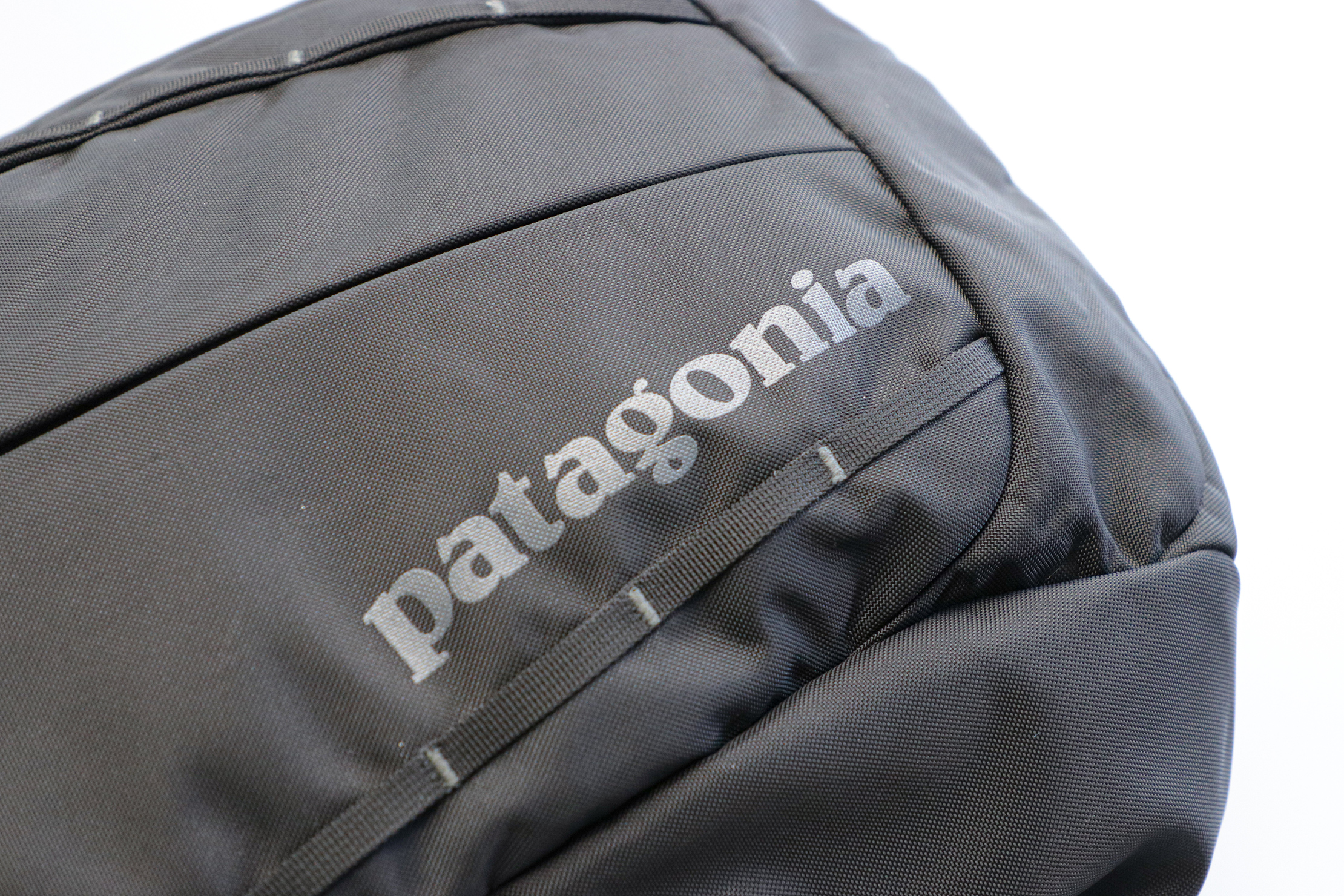
Besides utilizing recycled materials, Patagonia is also known for making products in a wild range of color combinations. When we say wild, we mean Smolder Blue with Roots Red accents and Mulch Brown with sky blue accents. To each their own, but we went with just classic black. This way you don’t look like a lost hiker wandering around downtown if you choose to use it as an EDC bag. There’s a big ‘ole Patagonia logo on the front, but it’s not too obnoxious on the black version. Some of the other colorways have a brighter logo, so if that’s your thing go for it, but we are all about more subtle and minimalist-looking packs.
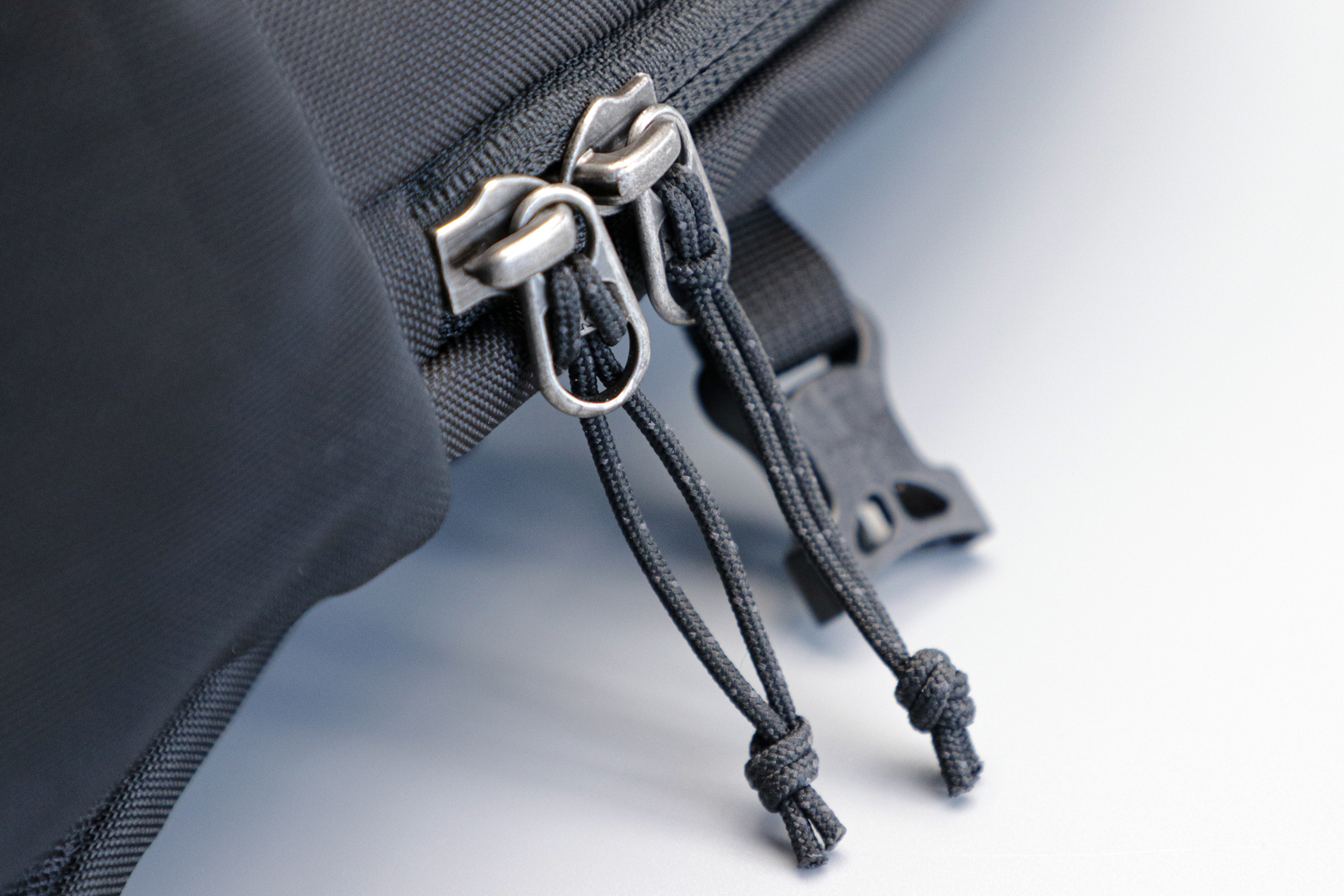
All the zippers on the Refugio are YKK, so we feel good about their durability. YKK is probably the most well-known and trusted zipper brand out there and we’ve almost never had an issue with them. The main compartment has a YKK #10 and the front pockets use a YKK #5. All are reverse coil which helps keep moisture out. Long, paracord zipper pulls give us rock climbing vibes and add to the overall outdoor aesthetic of the bag.
External Components
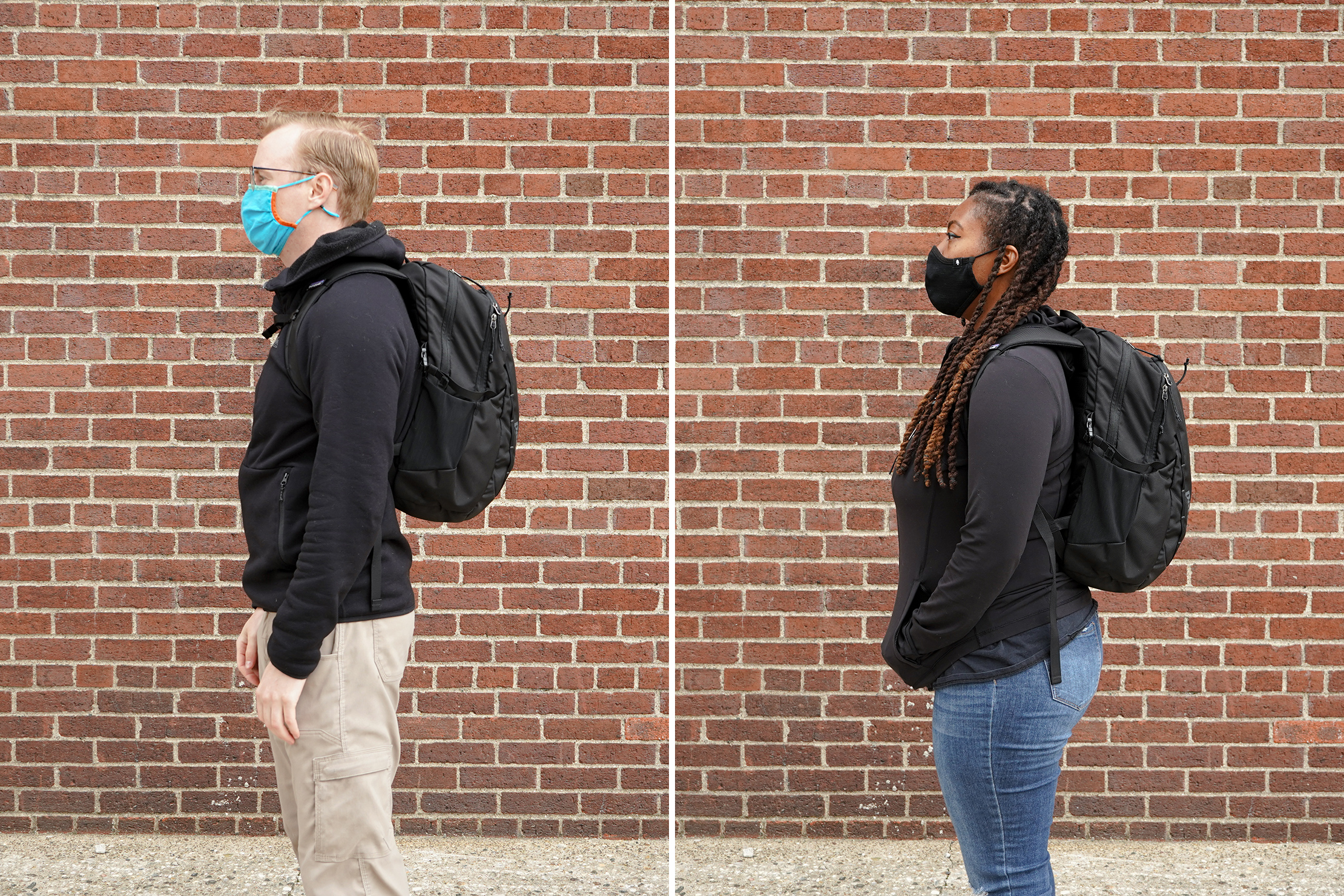
The front of the Refugio has two rows of daisy chains. We’re not talking about flowers, these loops of nylon webbing are for clipping on accessories with a carabiner. Though we guess you could clip on some flowers if you really wanted to? These are a good spot to attach organizer pouches, wet hiking shoes or socks, and anything you don’t want taking up space inside of your bag.
The sternum strap can be removed but it’s a bit of a hassle because it’s held in place by a tight clip. This is actually a great thing because it won’t slip out easily. Some sternum straps are loose and easy to lose. It’s only a bad thing if you don’t plan on using the sternum strap or want to adjust it to another slot along the shoulder straps. If not, then no need to worry. Those little shoulder strap loops are also for attaching accessories.
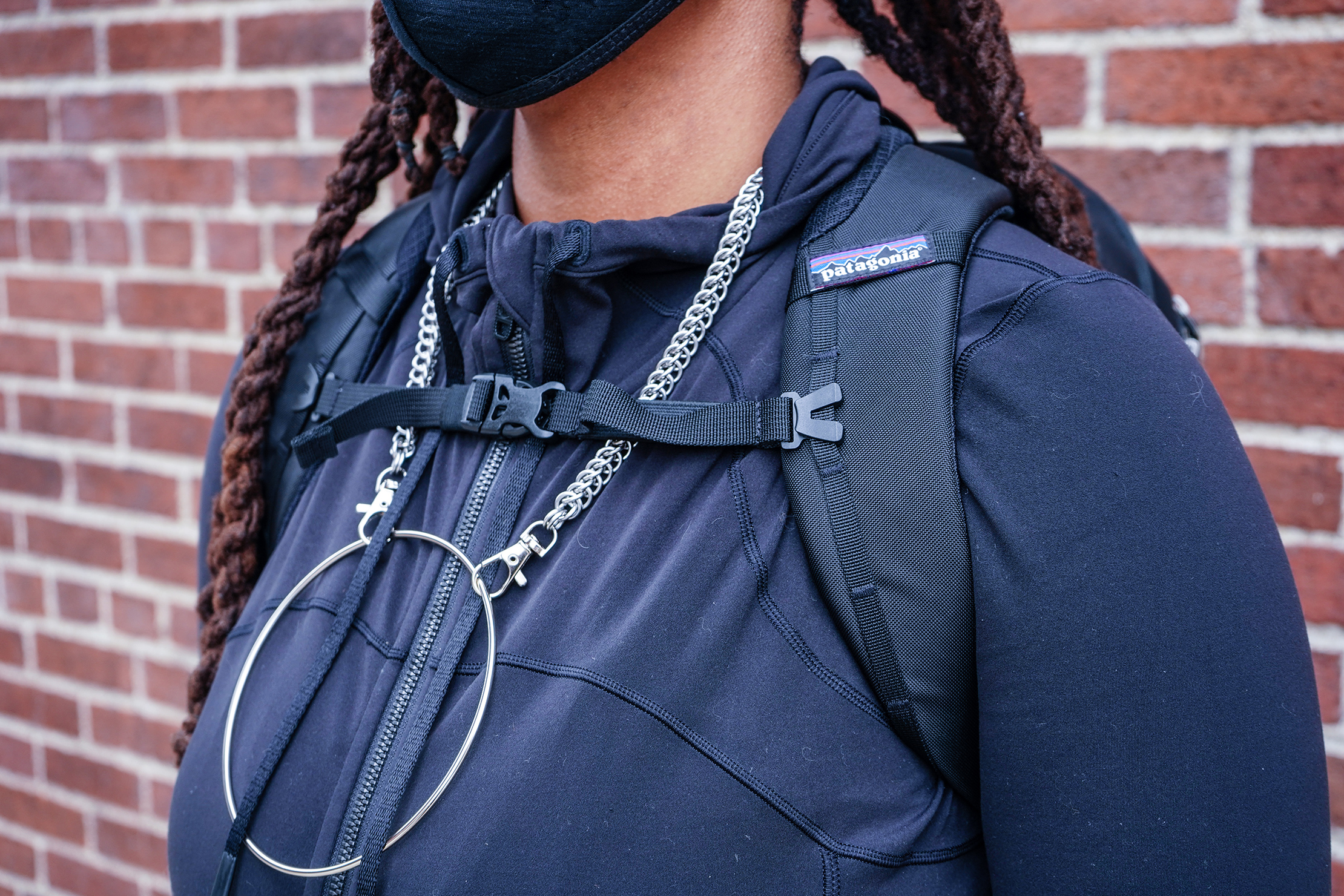
Now, you may be thinking it’s overkill to have accessories clipped onto both the front of the pack and shoulder straps, but it really depends on how you do it. For example, we attached a TUSHY Travel Portable Bidet on the front, because you never really know what the outhouse situation is going to be like in the woods. On the shoulder strap, we put a Gossamer Gear Shoulder Strap Pocket to hold our phone. Having easy access to your stuff when you’re climbing or trekking is important, but having a bunch of pouches swinging around probably isn’t the most comfortable, and can also be kind of jingly. Shoulder strap pockets are a good alternative to bouncy pouches but to each their own. The daisy chains and shoulder strap loops are there for you to customize your carry as you see fit.
Since we are talking about the shoulder straps, this is where you’ll notice the main difference between the men’s and women’s versions as we mentioned earlier. Patagonia says the women’s version has shorter and more tapered shoulder straps. Along with that comes a shorter back panel and a more narrow profile. The back panel itself is so densely padded that you won’t feel your laptop inside against your back at all. It also has a layer of Airflow Mesh to fight back sweat. A bit of this mesh is also on the shoulder straps for the same reason, although it does have a bit of a crunchy feel and sound. After several five-mile hikes, we didn’t have any issues with swamp back, but we can’t guarantee this won’t be the case on extended voyages.
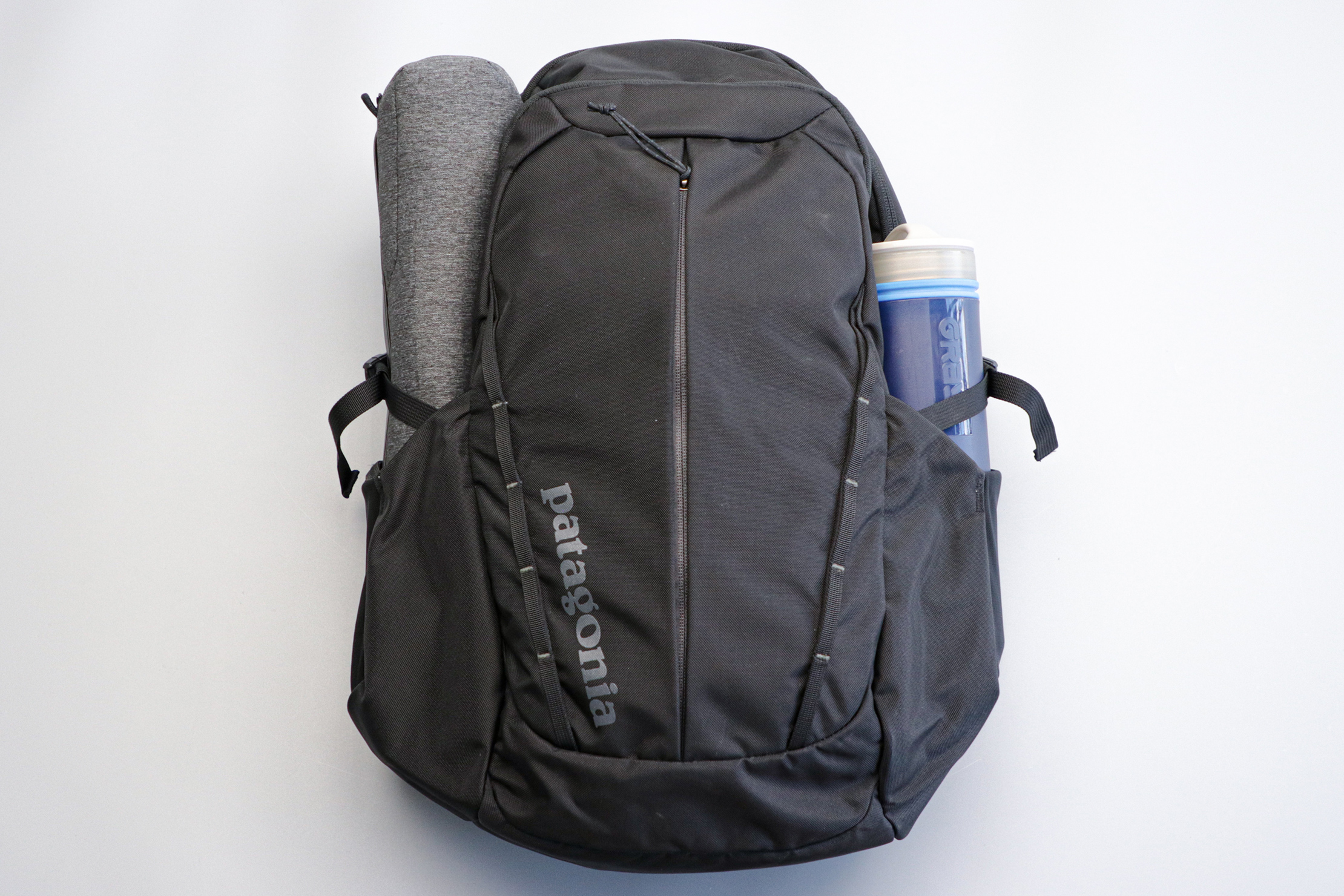
This pack has nice, wide, stretchy water bottle pockets on both sides. We’re a big fan of packs that let us carry both water and coffee at the same time, but really these pockets can hold much more. The elastic mesh material stretches from the front to the back of the pack so you can comfortably fit a tripod in here if you’re planning on getting some nature shots in. They can also fit a yoga mat, although this will make your bag heavy and uneven on one side, so we don’t recommend carrying one this way. It is possible, though! A compression strap is located right above each bottle pocket, which helps hold a tripod or hiking poles (or you know, just a thermos) in tightly. They do block access to both the compartment zippers, which is frustrating when you need to get something from inside the bag.
Inside The Pack
The front pocket on the Patagonia Refugio Backpack is for quick grab items. It features a vertical zipper, which makes the pack look pretty slick. This zipper also works when you want to swing the pack around off one shoulder and grab something without taking it off. The zipper will be right side up in this case. Just be careful with this, as your water bottle may slip out of the side, depending on its size and shape. We used a 20 ounce Contigo THERMALOCK thermos and the combination of its slender shape and stainless steel meant it slipped right out if we had the pack on its side.
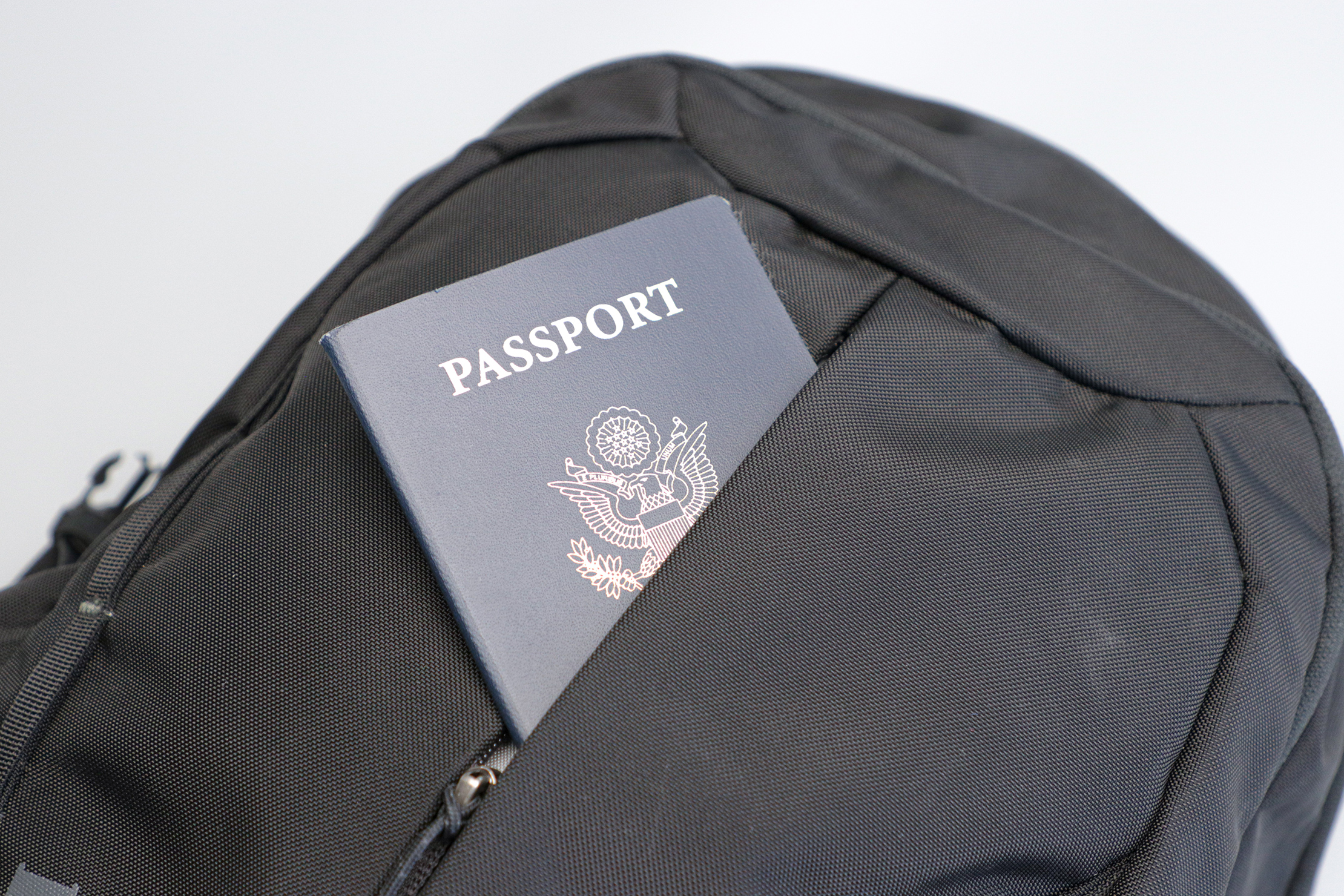
You’ll have to pack your items off to either side of the zipper. We found this pocket works best with long, thin, and flat snacks. No problem as protein bars, jerky, and packets of nut butter all fit that description—and are amongst our absolute favorites for outdoor trekking. Also, it’s a good place to stash passports and boarding passes. You know, the important stuff.
Besides the front pocket, this pack actually has two compartments. Both of them open up horseshoe style and both are blocked by the compression straps as we mentioned earlier. If you keep the compression straps relatively loose, they don’t get in the way too much. It’s when you’ve got them tightened around a water bottle that they become a nuisance.
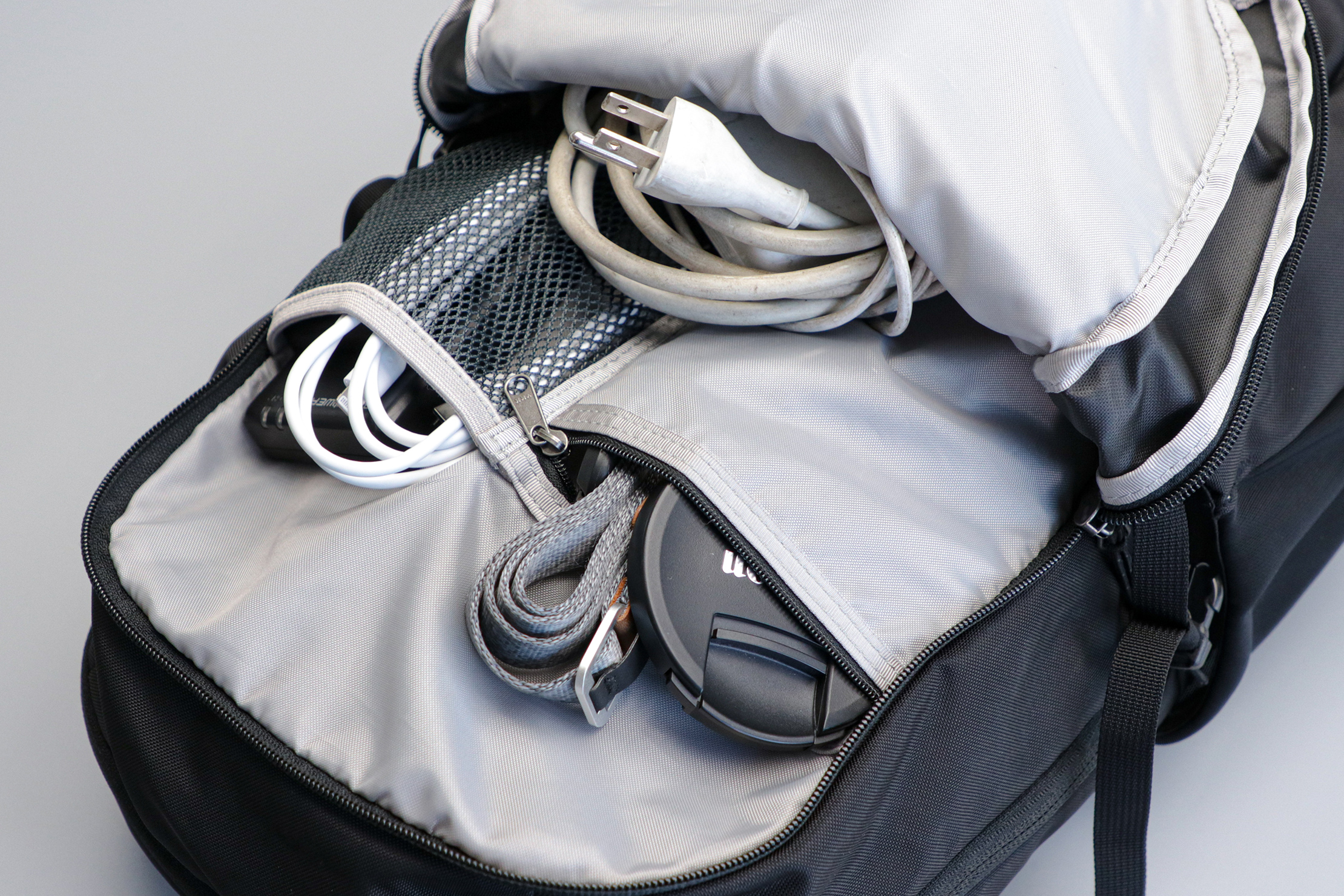
The first compartment has two pockets for small items like tech bits and snacks. One is a zippered pocket and the other has mesh so you can see what’s inside. We put a magic mouse, earbuds, and a massage ball in here for releasing sore muscles after long days of walking. There’s also a key leash inside if you feel so inclined to use one. The rest of this compartment is open, but the free space is a bit narrow so you can’t fit very much inside, especially if you’ve got the main compartment packed out.
Onto the main compartment, there’s a thick laptop sleeve at the back with a smaller device pocket on the front. The sleeve can fit up to a 15” laptop and the smaller pocket is suitable for a tablet or notebook. When using this bag as a daypack during work commutes, we had a 13” MacBook Air in the laptop sleeve, and a magic keyboard and notebook in the device pocket. This laptop sleeve is densely padded and has a false bottom to protect your precious cargo from harsh drops. There’s also a little buckle here to keep it in place which isn’t really necessary. Where it comes in handy is if you choose to put a water bladder in here instead of a laptop. Then you can thread the hose through a tiny opening right above the sleeve, which comes out of the back panel.

The rest of the space in the main compartment is open, but we found it to be really tight and hard to see into. For example, we had a Heimplanet packing cube and small NOMATIC Toiletry Bag in here. Arguably, there was still some room left, but since none of the compartments are liter independent, they all eat up space from each other. The key is to pack your items vertically because you won’t be able to see anything that’s down at the bottom. We’re not sure if this is only on the women’s version due to the more narrow shape, or not, but some strategic packing is definitely necessary.
We took this bag hiking and camping in addition to using it on a daily basis to commute to work. Day-to-day the 26L version had enough space for a laptop, tech accessories, notebook, and a few snacks. On a hiking trip, it was comfortable to carry for several miles, held up in light rain, and allowed us to attach all the accessories we needed. We just wish the women’s version had more space, and maybe some liter independent pockets so the main compartments didn’t feel so cramped.
Usage Timeline
Condition: Excellent
- The water bottle pockets are stretchy and large, reaching even slightly towards the front
- Water beads nicely off the DWR-coated fabric
- The back panel is covered with soft mesh so it’s cool and comfortable on the back
Condition: Excellent
- Shorter and more narrow back panel on the women’s version is very comfortable if you’re on the shorter side
- Harness system is comfortable for hiking
- Front pocket and middle pocket can become cramped even where the main compartment is not completely full


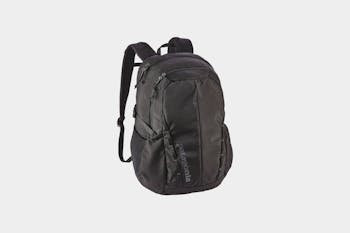






Get your questions about the Patagonia Refugio Backpack answered from our team and the Pro Community right here on the page. Plus, join discussions with other members about gear, guides, and more.
Join Pack Hacker Pro or, Sign In